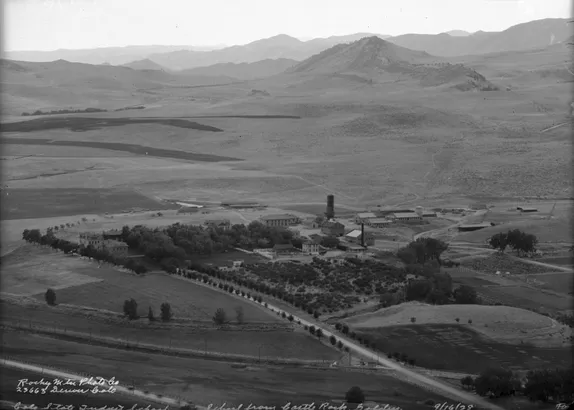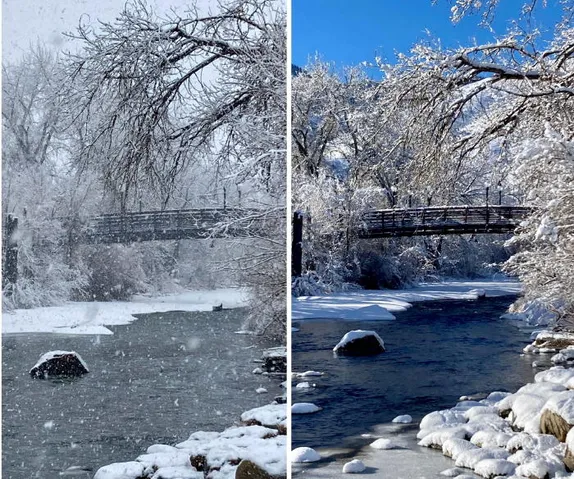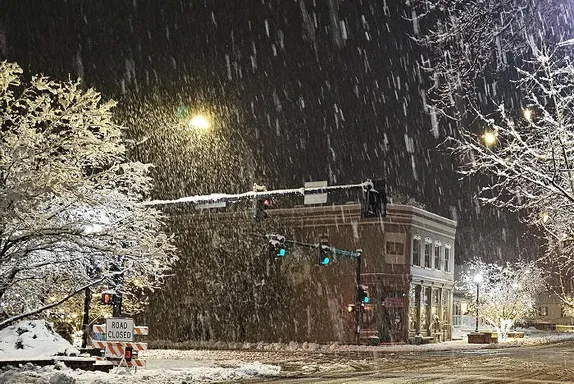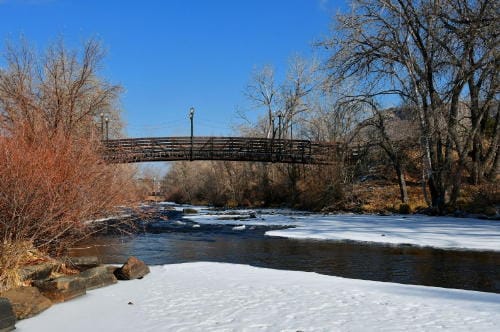
COVID Updates

Appointments to Get the COVID Vaccine (Eligibility)
State of Colorado’s Find Out Where You Can Get Vaccinated page | Lutheran Medical Center | JCPH Clinic in Arvada (70+ only) | www.vaccinespotter.org/CO/
Jefferson County Public Health’s COVID-19 Vaccine Call Center: 303-239-7000 | State Hotline to answer questions, including location of vaccine providers: 1-877-268-2926. It is staffed 24 hours a day
Golden Testing Sites
Mines COVID Testing | Jeffco Fairgrounds COVID Testing
Jefferson County Case Summary:
Cases in Jeffco – Mon: 38,131 | Tues: 38,171 (+40)
Deaths in Jeffco – Mon: 769 | Tues: 771 (+2)
Currently Hospitalized in Jeffco – Mon: 36 | Tues: 34 (-2)
Known Cases in Golden – Thurs: 1521 | Mon: 1539
Recovered – Mon: 36,421 | Tues: 36,484 (+63)
More Public Health References
School of Mines COVID-19 case page. | Sign up for exposure notifications | CDC | Colorado | Jefferson County | City of Golden
Virtual Events
8:30-9:30AM Virtual Power Training
10:15AM Baby Time with the Library
3-5PM Hard Times Writing Workshop
6-7:30PM Great Decisions – Struggles Over the Melting Arctic
6-7:30PM Golden Safety Academy
6PM Golden Anti-Racism Collective General Meeting
Tonight’s Topic: Does Buffalo Bill Deserve to be Celebrated?
For over 40 years Buffalo Bill Days has been Golden’s premier community celebration, happening last full weekend in July. But does Buffalo Bill deserve to be celebrated?
Golden History Moment
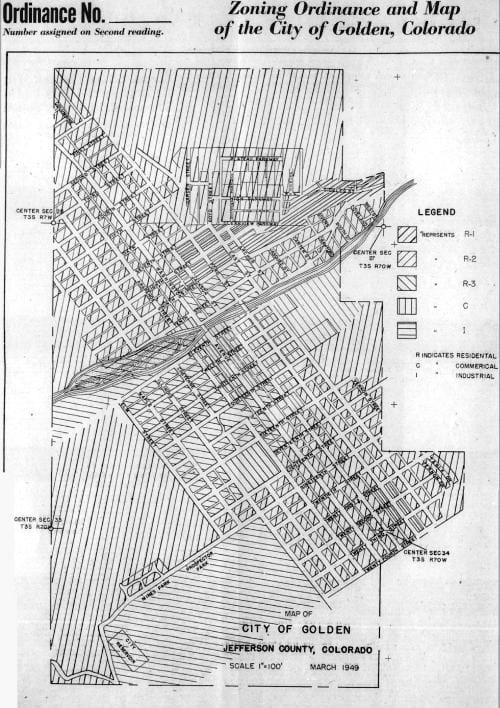
72 Years Ago
By 1949, Golden had had four years (since the end of World War II) to experience rampant growth with no rules about what people could build on their property. In the immediate aftermath of the War, residents had been more than ready to help house the influx of returning GIs in any way possible (renting out rooms and parking trailers in yards), By 1949, Mines had built some on-campus housing, developers had started to build homes, and Golden was ready to embrace post-War suburbia. They wanted single family homes and private yards.
This first zoning code had been kicked off in 1948, when City Council set up our very first Planning Commission. That group worked on the plan for several months, then held a series of public input meetings–some city-wide, some for individual neighborhoods or wards. According to the Transcript, people were generally supportive of the new rules, and in some cases thought they should be more restrictive. The first reading of the ordinance occurred in March of 1949 and Council approved it on April 7, 1949.
R-1 lots (single family home lots) were a minimum of 7,000 square feet. Ten years later, in 1958, the R-E (residential estate) zone was added. (The Beverly Heights neighborhood is zoned R-E.) Those lots were at least 9,000 square feet.
There were also R-2 (duplexes) and R-3 (multi-family) zones, but in many cases people built single family homes in areas that would have allowed denser development.
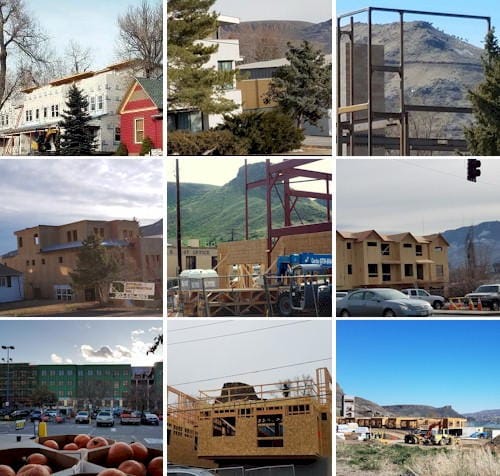
Now
Golden has become more and more desirable over the past thirty years. As a result, we’ve seen a lot of development–both commercial and residential. Many residents are frustrated that the quaint, quiet small town of thirty years ago is ceaselessly growing, becoming busier and more populous. Residential property is hard to come by.
This ties back to what I said about R-2 and R-3 neighborhoods. The multi-family zoning allows much more density than people are used to seeing. When developers began buying small single family homes and replacing them with much (much!) larger condos or townhouses, neighbors were shocked (and appalled!). Two years ago, residents began to work with the Planning Commission to devise some new design elements that would make new construction more compatible with the neighborhoods. New buildings need peaked roofs, rather than flat roofs built as tall as the rules will allow. The setbacks from the lot lines increased. New homes must have porches. This was a good start to making new construction more compatible with existing neighborhoods.
Now the City has begun the process of re-writing our zoning code from scratch. The reason for this rewrite depends on who you ask. Some say the goal is to prevent new construction from overwhelming older neighborhoods. Some say the rewrite will provide more affordable housing by increasing density in our neighborhoods.
There has been a very spirited discussion the past couple of days on NextDoor about what the proposed zoning changes will do to single family (R-1 and R-E) neighborhoods. The new code allows several small house types in those neighborhoods. No one objects to that. The concern arises over the fact that those new homes can be built on much smaller lots. A “cottage,” for instance, can be built on a 3200 square foot lot. Recall that under our current code, R-1 lots are at least 7,000 square feet and R-E lots are at least 9,000 square feet. This may make our 1950s & ’60s homes very desirable targets for scraping.
Here’s an example: one of the homes in my neighborhood is built on a large-ish corner lot. The home is about 1800 sq ft, and according to Zillow, it’s worth about $800,000. Because that yard is large and is accessible from two streets, a developer could build four cottages on it. Would anyone demolish an $800K home? Well yes, if they could replace it with four cottages that would sell for $900K each. How did I arrive at that price?

The new townhouses on Ford St. are 2000 sq feet each and are currently worth about $900K. Cottages can also be up to 2000 sq feet. Plus they come with their own yard. That kind of math is making R-1 and R-E residents nervous about the future of their neighborhoods.
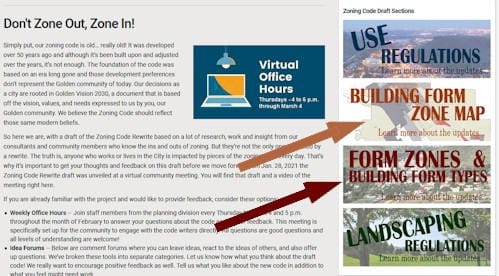
If you haven’t looked at the Guiding Golden section about the proposed Zoning Code, you should. Start by looking at your neighborhood on the Building Form Zone Map to see what zone you’re in. Then look at the Form Zones & Building Form Types to see what’s allowed in your neighborhood.
I think this new Zoning Code has potential to improve some things in Golden; for instance, I think clusters of cottages will be an improvement over large condo/townhome buildings. However, I do think the potential for lot subdivision in the post-War R-1 and R-E neighborhoods is troubling.


